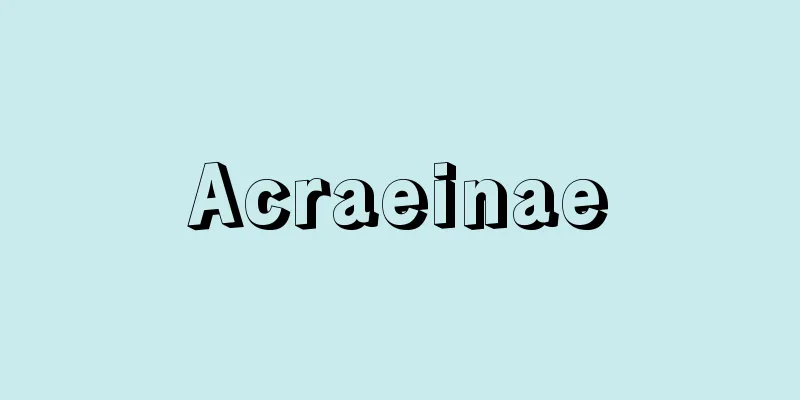Susanoo-no-Mikoto

|
He is an important god in the Kojiki and Nihon shoki mythology, appearing as the son of the two gods Izanagi and Izanami no Mikoto (Nihon Shoki) and with the Sun and Moon Gods at the time of Izanagi no Mikoto's purification ritual (Kojiki). He is also the originator of the Izumo mythology. He caused disaster and was banished by his father because he did not rule the territory assigned to him by his father and cried for his mother's land of Neno Kuni. Izanagi went to meet his sister Amaterasu Omikami in Takamagahara to apologize, but Omikami suspected that his violent behavior would take away his territory and welcomed him armed. To prove his purity of mind, Mikoto made a vow, which enabled him to prove his purity of mind, but he became arrogant in his victory and committed various acts of debauchery known as Amatsutsumi, until finally Amaterasu hid herself in the Heavenly Rock Cave, and the whole world fell into darkness. For this sin, Mikoto was banished by the gods and went to Nekuni, where he defeated the Yamata no Orochi (Eight-headed Serpent) in Izumo Province on the way and became the ruler of Nekuni. He then met Okuninushi no Mikoto and put him through trials, eventually giving him his daughter and sacred vessels, and ordering him to become the ruler of Ashiwara no Nakatsukuni. Thus, this god shows two completely opposing sides when he is portrayed in Takamagahara and when he is portrayed in Izumo or Nekuni. The circumstances of his birth are also strange, with the sun and moon gods emerging from each eye, whereas the god emerged from the nose. This shows that this god was not originally a heavenly god of Takamagahara, but was fashioned into an incarnation of a criminal who opposes Amaterasu Omikami and the younger brother of the great god, as conceived in the Kojiki and Nihon shoki myths. His disobedience and debauchery led to the development of the mythology of Takamagahara, and his position as an exiled person and younger brother placed the great lineage of national gods in the Kojiki, whose ancestor was Susanoo, below Amaterasu Omikami, and further guaranteed the sovereignty of the heavenly grandson to the land. The essence of this god is found in Nekuni, and can be found in what comes and goes from there. The name of the god is also related to the place name Susa, and "Susa" may have its origin in the shaman king Susun of Silla. There are many articles about this god related to Korea, such as his descent from heaven to Silla. The faith in him was brought from Korea by the Kii Navy, including the Karaama people, and while retaining the color of a foreign god associated with the immigrant culture, it is assumed that he gradually developed from Kii to Izumo as a complex ancestral deity. [Yoshii Iwao] Source: Shogakukan Encyclopedia Nipponica About Encyclopedia Nipponica Information | Legend |
|
伊弉諾・伊弉冉尊(いざなぎいざなみのみこと)二神の子として(日本書紀)、また伊弉諾尊の禊(みそぎ)のとき(古事記)などに日月神とともに出現した、記紀神話の重要な神。出雲(いずも)系神話の始祖でもある。父から定められた支配地を治めず、母の国の根国(ねのくに)を慕って泣いたため、災いを起こして父に追放される。尊はそのいとまごいのために高天原(たかまがはら)の姉、天照大神(あまてらすおおみかみ)に会いに行くが、大神はその粗暴な行動に支配地を奪われるのかと疑いをもち、武装して迎える。尊は心の清明を証(あか)すために誓約(うけい)をし、これによって心の清明を証しうるが、勝利におごって天津罪(あまつつみ)とよばれるさまざまな乱行を重ね、ついに天照大神は天岩戸(あめのいわと)に隠れ、全世界が暗黒となる。この罪により尊は神々に追放され、根国に赴くが、途中の出雲国では八岐大蛇(やまたのおろち)を退治し、根国の支配者となる。そののちは大国主命(おおくにぬしのみこと)を迎えてこれに試練を課し、最後には娘を与え、さらに聖器を授けて大国主命に葦原中国(あしわらのなかつくに)の統治者となることを命じる。 このように、この神は高天原を舞台とするときと、出雲あるいは根国を舞台とするときとではまったく相反する二面を示している。出生の状況も、日月二神が左右の目より出現するのに対して、鼻より出現するなど異様であり、この神は元来、高天原の天神(あまつかみ)的存在ではなく、記紀神話の構想によって天照大神に対抗する罪人の権化(ごんげ)、かつ大神の弟という存在に仕立てられたことがわかる。その不服従や乱行により高天原での神話を展開するとともに、追放者、弟としての位置づけは、素戔嗚尊を始祖とする『古事記』の国神(くにつかみ)の大系譜を天照大神の下位に位置づけ、さらに天孫の国土支配権を保証したのである。この神の本質は根国にあって、そこから去来するところに求められる。またその神名は地名須佐(すさ)と関連をもつとともに、さらに「すさ」は、根源には新羅(しらぎ)の巫覡(ふげき)王・次次雄(ススン)に淵源(えんげん)をもつものであろう。この神には新羅への天降(あまくだ)りなど、朝鮮関係の記事が多い。その信仰は、韓海人(からあま)を含む紀伊水軍によって朝鮮より運ばれ、渡来文化と結び付く蕃神(ばんしん)的色彩を残しつつ、しだいに複雑な祖霊的神格として紀伊より出雲に展開したと推定される。 [吉井 巖] 出典 小学館 日本大百科全書(ニッポニカ)日本大百科全書(ニッポニカ)について 情報 | 凡例 |
Recommend
Talus - Gaisui
A semi-cone-shaped formation formed when weathere...
One-sided action
〘noun〙 A legal act that is established by the expr...
Swordfish fishing - Swordfish fishing
…fishing in which a harpoon is cast from a boat t...
Summer resort - Hishosanso (English: Bì shǔ shān zhūang)
A villa from the Qing dynasty in Chengde, Hebei Pr...
Pierre Vernier
...It is a supplementary scale that divides the g...
Ladybug
… [Chokane Hayashi] [Name and Folklore] Ladybugs ...
Cliff construction - Cliff construction
…Building on a sloping or stepped site, or overha...
barbe
…In the 14th century, there was a hood called a w...
Śaka (English spelling) Saka
…[Otani Nakao] Later, around the 1st century BCE,...
Wood and Son - Wood Fushi
These British Palladian architects, father and son...
d'Anglebert, JH (English spelling) dAnglebertJH
...From around 1641, he hosted private concerts c...
Duodecimal system - duodecimal system
A method of expressing numbers. It uses 12 numbers...
Masuhiro Ozeki
1838 * - 1868 * A daimyo from the end of the Edo ...
Sens - Sansu (English spelling)
It is the sub-capital of the Yonne department in ...
Aotozoshihana no shikie - Aotozoshihana no shikie
A Kabuki play. A domestic drama. Five acts. Writt...









